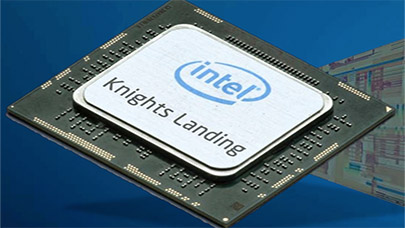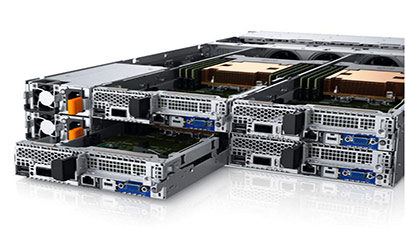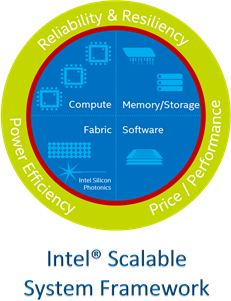
Aurora the Survivor: Exascale Supercomputer Arrives After Eight Years of Doom
November 13, 2023
Many products were sacrificed in the eight years it took to bring the Aurora supercomputer to life. Nonetheless, anticipation for the second U.S.Exascale system Read more…

Knights Landing Processor with Omni-Path Makes Cloud Debut
April 18, 2017
HPC cloud specialist Rescale is partnering with Intel and HPC resource provider R Systems to offer first-ever cloud access to Xeon Phi "Knights Landing" processors. The infrastructure is based on the 68-core Intel Knights Landing processor with integrated Omni-Path fabric (the 7250F Xeon Phi). Read more…

PRACE Posts 2017 Best Practice Guide for KNL
January 26, 2017
If you are looking for guidance with programming and working with Intel's Xeon Phi (Knights Landing) processors, a solid resource was posted today on the Partne Read more…

Dell Knights Landing Machine Sets New STAC Records
November 2, 2016
The Securities Technology Analysis Center, commonly known as STAC, has released a new report characterizing the performance of the Knight Landing-based Dell PowerEdge C6320p server on the STAC-A2 benchmarking suite, widely used by the financial services industry to test and evaluate computing platforms. The Dell machine has set new records for both the baseline Greeks benchmark and the large Greeks benchmark. Read more…

Intel® Scalable System Framework: Using Next Generation Processors Opens the Door to Faster, More Efficient Deep Learning
April 11, 2016
Deep learning has inspired a gold rush of technology innovation across a wide range of markets from Internet search, to social media, to real-time robotics, sel Read more…

DU GeoSolutions Leverages Xeon Phi for Improved Seismic Processing
March 23, 2016
It’s a given that modern oil and gas exploration couldn’t exist without increasingly powerful supercomputers. Today's machines enable new capabilities, impr Read more…

The Future of High-Performance Computing Has Arrived
February 22, 2016
Intel® Scalable System Framework, an advanced approach for developing scalable, balanced and efficient HPC systems, is paving the path to Exascale by incorpora Read more…

Strip-Mining for Vectorization to Achieve Order of Magnitude Improvement
September 14, 2015
Strip-Mining for Vectorization is the focus of the second installment of a 3-part educational series from Colfax International introducing select topics on opti Read more…

- Click Here for More Headlines

Whitepaper
Transforming Industrial and Automotive Manufacturing
In this era, expansion in digital infrastructure capacity is inevitable. Parallel to this, climate change consciousness is also rising, making sustainability a mandatory part of the organization’s functioning. As computing workloads such as AI and HPC continue to surge, so does the energy consumption, posing environmental woes. IT departments within organizations have a crucial role in combating this challenge. They can significantly drive sustainable practices by influencing newer technologies and process adoption that aid in mitigating the effects of climate change.
While buying more sustainable IT solutions is an option, partnering with IT solutions providers, such and Lenovo and Intel, who are committed to sustainability and aiding customers in executing sustainability strategies is likely to be more impactful.
Learn how Lenovo and Intel, through their partnership, are strongly positioned to address this need with their innovations driving energy efficiency and environmental stewardship.
Download Now
Sponsored by Lenovo
Whitepaper
How Direct Liquid Cooling Improves Data Center Energy Efficiency
Data centers are experiencing increasing power consumption, space constraints and cooling demands due to the unprecedented computing power required by today’s chips and servers. HVAC cooling systems consume approximately 40% of a data center’s electricity. These systems traditionally use air conditioning, air handling and fans to cool the data center facility and IT equipment, ultimately resulting in high energy consumption and high carbon emissions. Data centers are moving to direct liquid cooled (DLC) systems to improve cooling efficiency thus lowering their PUE, operating expenses (OPEX) and carbon footprint.
This paper describes how CoolIT Systems (CoolIT) meets the need for improved energy efficiency in data centers and includes case studies that show how CoolIT’s DLC solutions improve energy efficiency, increase rack density, lower OPEX, and enable sustainability programs. CoolIT is the global market and innovation leader in scalable DLC solutions for the world’s most demanding computing environments. CoolIT’s end-to-end solutions meet the rising demand in cooling and the rising demand for energy efficiency.
Download Now
Sponsored by CoolIT
Advanced Scale Career Development & Workforce Enhancement Center
Featured Advanced Scale Jobs:
HPCwire Resource Library
HPCwire Product Showcase
© 2024 HPCwire. All Rights Reserved. A Tabor Communications Publication
HPCwire is a registered trademark of Tabor Communications, Inc. Use of this site is governed by our Terms of Use and Privacy Policy.
Reproduction in whole or in part in any form or medium without express written permission of Tabor Communications, Inc. is prohibited.
























